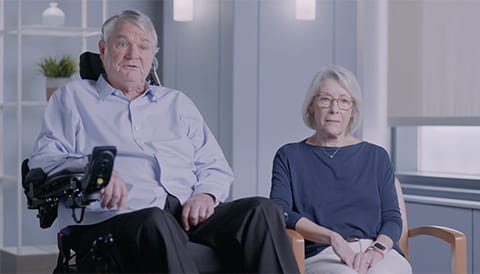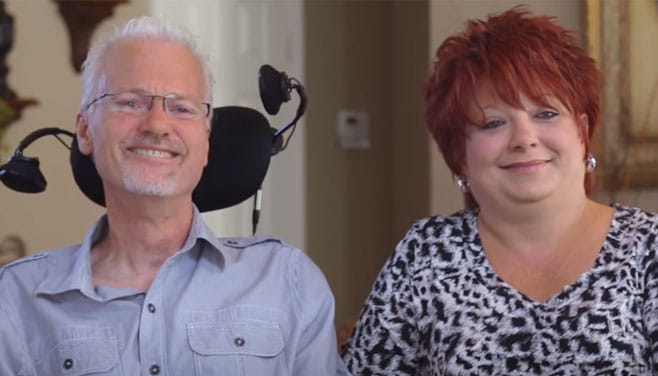Amyotrophic Lateral Sclerosis (ALS)
Let Us Help You Find a Doctor
Let Us Help You Find a Doctor
U.S. PATIENTS:713.441.3760
Find a Specialist Near You
If you or a loved one are diagnosed with ALS, our experienced and passionate neurology providers become your partner in hope. Houston Methodist is a proven leader in ALS diagnosis, management and research.
Houston Methodist founded the nation’s first multidisciplinary ALS Clinic. In this specialty clinic, our “Team Hope” experts provide world-class research and clinical trials, patient and family support groups and compassionate expertise that is unique to our Houston clinic.
Care for amyotrophic lateral sclerosis — also known as Lou Gehrig’s disease — must be highly personalized. ALS damages nerve cells in muscles throughout the body, so every patient and family face distinct challenges and opportunities with this condition. The chance to improve the lives of patients and their families drives us every day.
Houston Methodist founded the nation’s first multidisciplinary ALS Clinic. In this specialty clinic, our “Team Hope” experts provide world-class research and clinical trials, patient and family support groups and compassionate expertise that is unique to our Houston clinic.
Care for amyotrophic lateral sclerosis — also known as Lou Gehrig’s disease — must be highly personalized. ALS damages nerve cells in muscles throughout the body, so every patient and family face distinct challenges and opportunities with this condition. The chance to improve the lives of patients and their families drives us every day.
Leading ALS Care in Houston & the Nation
- Advanced diagnosis and treatment – Using the latest technology, we can diagnose ALS at the first sign of symptoms. Early, personalized care can potentially slow disease progression and maximize the preservation of neuromuscular function.
- Clinical trials and research – Innovations from our clinical studies reveal therapies with the potential to halt or reverse the progression of ALS. We participate in many specialized studies that are not offered at other centers, benefiting patients with advanced therapies not yet widely available.
- National partnerships – Houston Methodist offers leading-edge, specialized ALS care to patients throughout the U.S. in collaboration with the Muscular Dystrophy Association (MDA) and the ALS Association (ALSA).
Diagnosis, Treatment & Education
Patient Success
Explore patient education resources for comprehensive ALS diagnosis and management.
Watch stories of patients who live life to the fullest — personally and professionally — while managing ALS.
Find Clinical Trials
Support Groups
We participate in multiple clinical research trials to improve and advance ALS treatment.
Monthly virtual meetings for patients, families and caregivers living with ALS.
Innovations in ALS Research

Learn More about our ALS Research
By developing a clinical trial to expand and infuse a patient’s dysfunctional T-regulatory cells, our researchers are working toward a treatment to potentially stop the progression of ALS.
Choose a Doctor at One of Our Locations
FILTERS:
Clear All Filters




